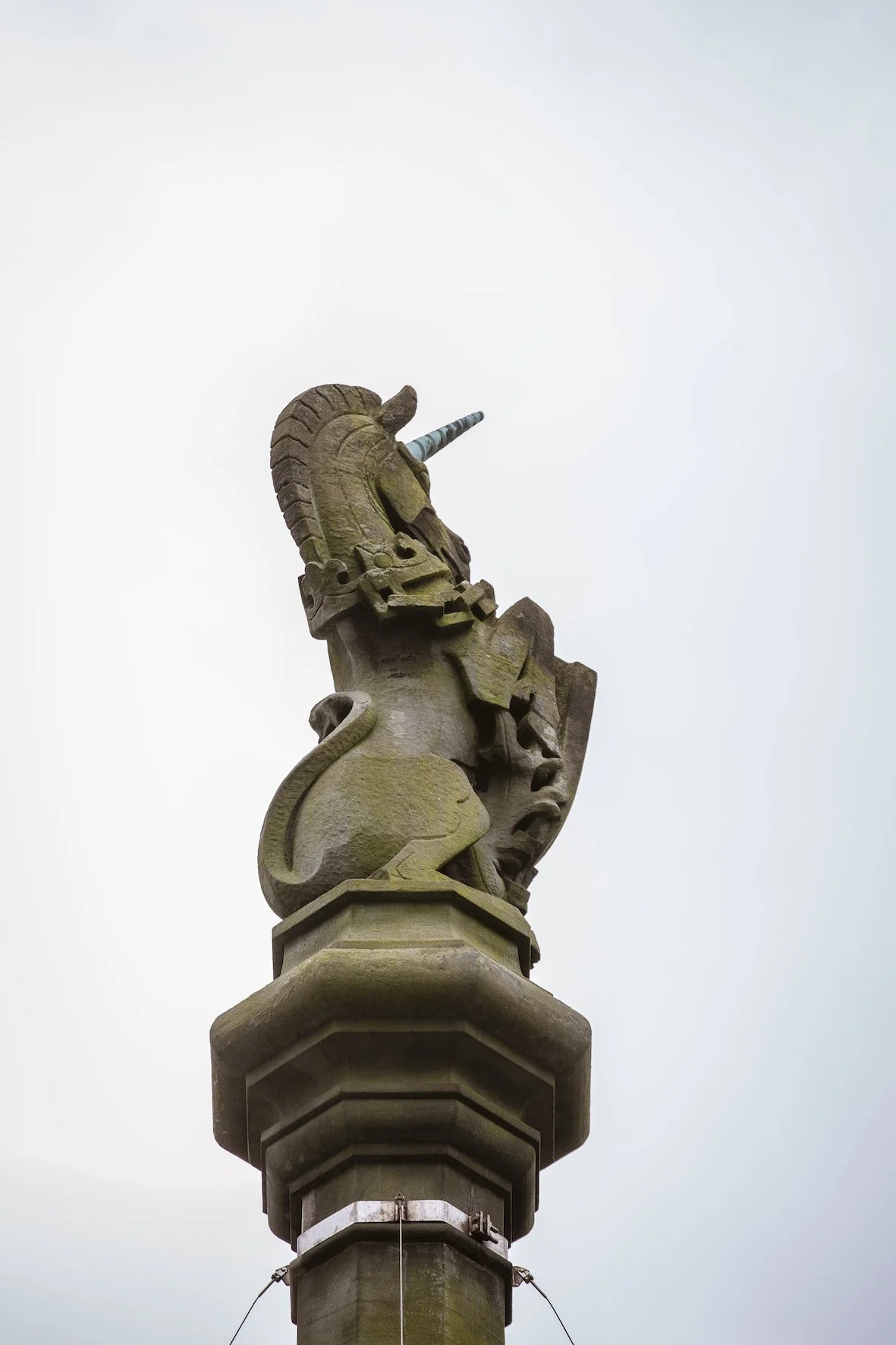Alternative Glasgow with Angie of Invisible Cities
Glasgow has a long and storied history, but too often the stories that we hear are those belonging to the rich and powerful men who write the history books. I set off to discover something new about my city by joining two very different tours that brought new perspectives. In this article, I share my experience with Invisible Cities.
This article is part of a two-part piece, "A Tale of Two Cities," published in issue 14 of the magazine, focussing on community action.
Words by Devon McCole | Photos by Karen Gordon
Invisible Cities is a social enterprise that was set up in 2016 by Zakia Moulaoui. They train people who have experienced homelessness or hardship to deliver tours in their own city. Founder, Zakia told me that, whilst the tour guides are given all the training they need, they get to map their own routes and decide their own tours. After I booked my space, I was told I would be meeting tour guide Angie from Maryhill. This is how my first ever Invisible Cities tour went.
I immediately spot my tour guide Angie in front of the People’s Palace. She’s wearing a bright red jumper and a big smile. “I started working with Invisible Cities three years ago,” she tells me. “I love it. I meet loads of new people and I’m fitter. I had a couple of heart attacks and after that, I knew things needed to change…I wasn’t brought up very well, this job’s changed my life.”
Invisible Cities is a social enterprise that trains people who have experienced homelessness or hardship to deliver tours in their own city. After some introductions and a few laughs, Angie starts her tour.
Directing my attention to the large terracotta fountain in front of us she says: “That’s actually the biggest terracotta fountain in the world. The statues at the top, they’re meant to be the countries in the UK; England, Scotland, Ireland an’ Wales. Holding them up at the bottom are some of the colonies of the British Empire, like South Africa there.”
I tilt my head towards the statues at the foot of the fountain where Angie is pointing to, shielding my eyes from the sun as she goes on talking. “A lot of the street names and buildings here are connected to slavery. Glasgow was the second city ‘cause of all the money they were making off the slavetrade. They were buying and selling all this cotton and tobacco that the slaves were picking away o’r in other countries. We sold all that here at places like Merchant City – Virginia Court in Merchant City is even named after the Virginia Gold tobacco company, ‘cause of the tobacco lords that worked there.”
She walks me from the People’s Palace to the Maggie McIver Gate of Glasgow Green and explains why her name is inscribed on the floor: “Maggie actually started the Barras. Back in the day people had stalls here in the park where they’d sell their stuff but it was illegal. Maggie bought the Barras so people had a place to sell their stuff without getting lifted. The same family owns it today but it’s only open on the weekends now, it used to be seven days a week back then. We're going there next.”
We walk together and Angie shares more about her work: “I've had groups who’ve told me they can’t hear a word I say ‘cause my accent. But even if you don’t catch everything, it’ll always be a laugh. People are really nice to me here. In my old job I got a lot of people shouting an’ swearing at me. I used to work in a roll shop buttering bread all day. People don’t respect you.”
As we walk to the Barras together Angie shares more of her story with me: “This is the best job I’ve ever had. I get the best support off my colleagues an’ my boss, an’ anytime I need any help I just need to phone her up an’ she’s like ‘nae bother.’” She laughs.
Angie tells me how the staff, tour guides and all, get together for trips away to socialise. I was happy to see Angie, someone who has been through hardship in her life, love the job that she does so much, especially hearing of all the support she gets through her employment with Invisible Cities: “I’ve got Michaela, she’s like a support worker. She doesn’t deal with the tours, she does everything else outside the tours, like gon’ places to see different buildings. An’ then Craig does all the stuff to do with the tours.”
The tour is personal as Angie mixes stories from around the city with her own. As we leave the Barras, a man shouts over to Angie playfully: “Is that you still talking?!” We laughed and Angie, returning the favour, shouts: “You know me, I never shut up!”
Our final stop was the sleeping Jesus sculpture on a bench near Nelson Mandela Place. It feels like a fitting end to a tour which made me realise that we all have our own stories to tell in this city – and how easy it is to overlook the world around you and the people in it.
To find out more, visit: invisible-cities.org.









